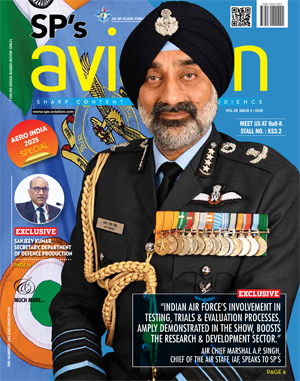INDIAN ARMED FORCES CHIEFS ON OUR RELENTLESS AND FOCUSED PUBLISHING EFFORTS
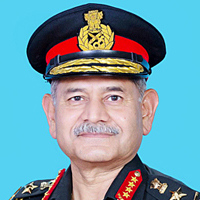
The insightful articles, inspiring narrations and analytical perspectives presented by the Editorial Team, establish an alluring connect with the reader. My compliments and best wishes to SP Guide Publications.
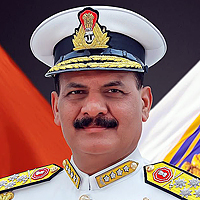
"Over the past 60 years, the growth of SP Guide Publications has mirrored the rising stature of Indian Navy. Its well-researched and informative magazines on Defence and Aerospace sector have served to shape an educated opinion of our military personnel, policy makers and the public alike. I wish SP's Publication team continued success, fair winds and following seas in all future endeavour!"

Since, its inception in 1964, SP Guide Publications has consistently demonstrated commitment to high-quality journalism in the aerospace and defence sectors, earning a well-deserved reputation as Asia's largest media house in this domain. I wish SP Guide Publications continued success in its pursuit of excellence.
Combat Fleet of IAF
India has failed to get its act together over the last decade to boost IAF's combat strength at the cost of national security
 |
The Author is Former Director General of Information Systems and A Special Forces Veteran, Indian Army |

The 21st Subroto Mukherjee Seminar, with the theme of "Aerospace Indigenisation: Way Ahead", was held at New Delhi on January 7, 2025. Media has described the address by Indian Air Force (IAF) Chief, Air Chief Marshal A.P. Singh as stressing the need for timely R&D, embracing failures, and increasing R&D funding from five per cent to 15 per cent of the budget. But the hallmark of the talk by ACM A.P. Singh was his voicing frustration over the ongoing delay in the delivery of the first 40 Tejas aircraft, despite the order being placed well over a decade ago.
This is in the backdrop of China showcasing two new stealth fighters in a flypast during December 2024; believed to be advanced sixth-generation fighter jets. The West is debating and downplaying the capabilities of these new Chinese jets but Indian analysts doing so simply denote the 'Ostrich' approach. China's PLA operates some 4,000 aircraft, of which around 2,566 are combat aircraft (fighter, attack and bombers). China has the second-largest active combat fleet in the world and the third-largest overall aircraft fleet in the world. China could deploy 1000 J-20 'Mighty Dragon' 5th-generation jets by the time India's Advanced Medium Combat Aircraft (AMCA) starts flying.
China could deploy 1,000 J-20 'Mighty Dragon' 5th-generation jets by the time India's Advanced Medium Combat Aircraft (AMCA) starts flying
The ground reality is that the IAF, grappling with depleting fighter squadrons for past several years, is hovering around 30 fighter squadrons (despite adding 36 Rafale fighter jets) against the sanctioned strength of 42. Many IAF aircraft are at the end of their service lives. Intransigence and red-tape have been delaying the acquisition of new fighter jets, as also upgrading the existing ones. In addition, projects like to Medium Multi-Role Combat Aircraft (MMRCA) and delays in the Tejas programme has contributed to the low combat strength of the IAF.
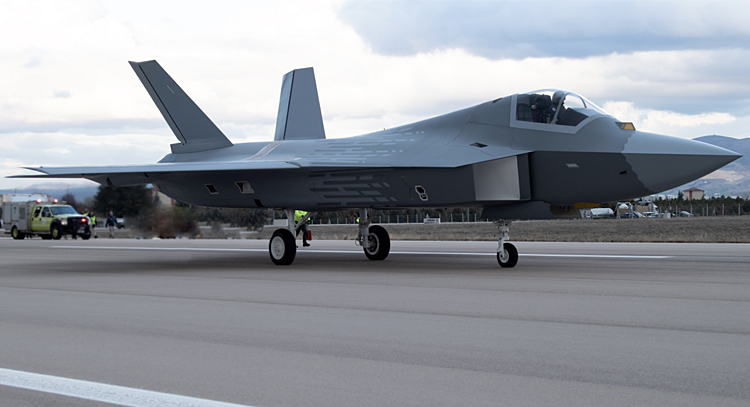
Concurrently, in a recent interview, former Pakistan Ambassador to India Abdul Basit Says Pakistan Air Force (PAF) will have a 6-8 years technological edge over the IAF with Induction of Chinese J-35A and Turkey's TAI TF Kaan. Basit said PAF already holds an edge over the IAF, despite India's numerical advantage in aircraft because of strategic acquisitions and fleet modernisation efforts, and exuded in the PAF's modernisation efforts and its ability to compete effectively with regional adversaries. Basit points out that India's response to these advancements has been slow, particularly regarding its own fifth-generation fighter development, like Advanced Medium Combat Aircraft (AMCA). He argues that by the time India integrates its new fighters, Pakistan will have already established a substantial lead in air combat capabilities.
Former Pakistan Ambassador to India Abdul Basit Says Pakistan Air Force (PAF) will have a 6-8 years technological edge over the IAF with the induction of Chinese J-35A and Turkey's TAI TF Kaan
Ironically, the focus by some analysts is on the demerits of Pakistan trying a misadventure in J&K at this point of time as suggested by some Pakistani handles on X, given Pakistan's precarious economic situation. Instead, we should be focussing on why the IAF, with fighter squadrons strength down to 1962-levels, has been apprehensive about dedicated air effort to the proposed Theatre Commands. More important is to wargame how India will cope with a multi-domain, multi-directional war with the China-Pakistan-Bangladesh bonding getting stronger. Incidentally, Myanmar recently took delivery of six Russian Su-30 jet fighters (bringing their Su-30 total to 31), while Bangladesh has approached the US for purchasing a squadron of F-16 fighter aircraft and is wanting to purchase China's Chengdu J-19C multirole fighter jets. The argument by some Indian analysts that air superiority is only one aspect is idiotic; denoting poor understanding of modern era warfare. Even in a conflict over Taiwan, the US doesn't plan beyond establishing temporary air corridors.

Amid the various news reports like: problems of aero engines; India on the brink of securing 6th generation jet engine deal for AMCA; Safran says new 110kN engine for AMCA independent of M88 technology; IAF endorses foreign joint venture (JV) in AMCA engine development for initial boost, with long-term goal of complete indigenous production and the like, cannot hide the fact that India has failed to get its act together over the last decade to boost IAF's combat strength; at the cost of national security, for which the political hierarchy must take blame for dancing to the tune of bureaucrats.
Air Marshal M. Matheswaran (Retd), who oversaw the tendering process of 126 Medium Multi Role Combat Aircraft (MMRCA) has said that MMRCA should have gone through. It was a blunder not going for it. It would have brought world-class manufacturing facilities to India.
Veteran Air Marshal M. Matheswaran, who oversaw the tendering process of 126 Medium Multi Role Combat Aircraft (MMRCA), told media, "MMRCA should have gone through. It was a blunder not going for it. It would have brought world-class manufacturing facilities to India and skill development. The French were backpaddling on the transfer of technology on the pretext that that HAL could not meet the standards. It was a delaying strategy, and India should have dealt with it firmly." The IAF proposed in August 2000 to acquire 126 Mirage 2000 II aircraft. The proposal was discarded in 2004, and in 2007, a decision was taken to acquire 126 aircraft under MMRCA. The MMRCA deal was in process for nearly 15 years before the Indian government scrapped it and purchased 36 Rafales directly from the French government."


One cannot deny that a series of bungled acquisition processes, including dumping the MMRCA, has left the IAF in such a sorry state. The manner in which the 36 Rafale fighter jets were procured indicated political vendetta by the then government against the previous government, but procuring only 36 aircraft in place of IAF's projected requirement of 126 fighters in 2000, 15 years later was felonious. It also indicated that the importance of the IAF was not understood; not surprising then that the first Chief of Defence staff publicly called them a "support force".
ACM A.P. Singh said that the term self-reliance is actually a little abused, because everybody in the world is looking for self-reliance, not only India, the only way forward is to establish, in the mid-term and long-term, global partnerships
In December 2024, the Ministry of Defence (MoD) formed a high-level committee under the Defence Secretary to look into the overall capability development of the IAF through indigenous design, development and acquisition process. But isn't the Defence Secretary responsible for the current state of the IAF? At the Subroto Mukherjee Seminar, ACM A.P. Singh said that the term self-reliance is actually a little abused, because everybody in the world is looking for self-reliance, not only India, the only way forward is to establish, in the mid-term and long-term, global partnerships. Isn't this what the government should have ensured all these years?
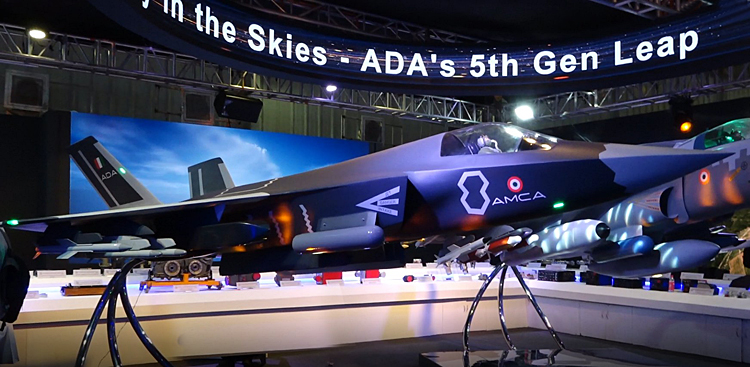
The LCA Tejas MK-2 is a must requirement for the IAF at the present juncture, focusing on its advancements over the earlier MK-1 and MK-1A versions, which are crucial for enhancing India's defence capabilities and supporting future programmes like the Advanced Medium Combat Aircraft (AMCA) and the Twin Engine Deck Based Fighter (TEDBF). The design and development timeline of the Tejas MK-2 is "reportedly" aligned with that of the AMCA and TEDBF programmes. The Preliminary Design Review (PDR) and Critical Design Review (CDR) activities for the Tejas MK-2 occurred about two years before those for AMCA and TEDBF, ensuring that lessons learned and technologies developed can be integrated into these future aircraft.
But the questions that need to be answered, starting with the question by ACM A.P. Singh as to when will the 40 LCA Tejas (ordered by IAF more than a decade ago) be delivered. When will Tejas Mk-2 be inducted into the IAF in adequate numbers and how many years/decades are the timelines for the AMCA and the TEDBF? Are the Defence Minister and the Government listening?





